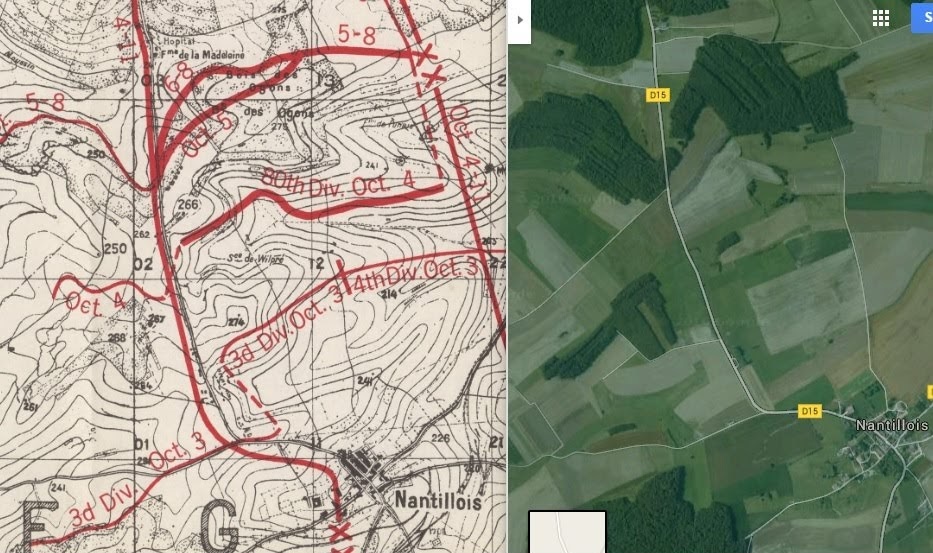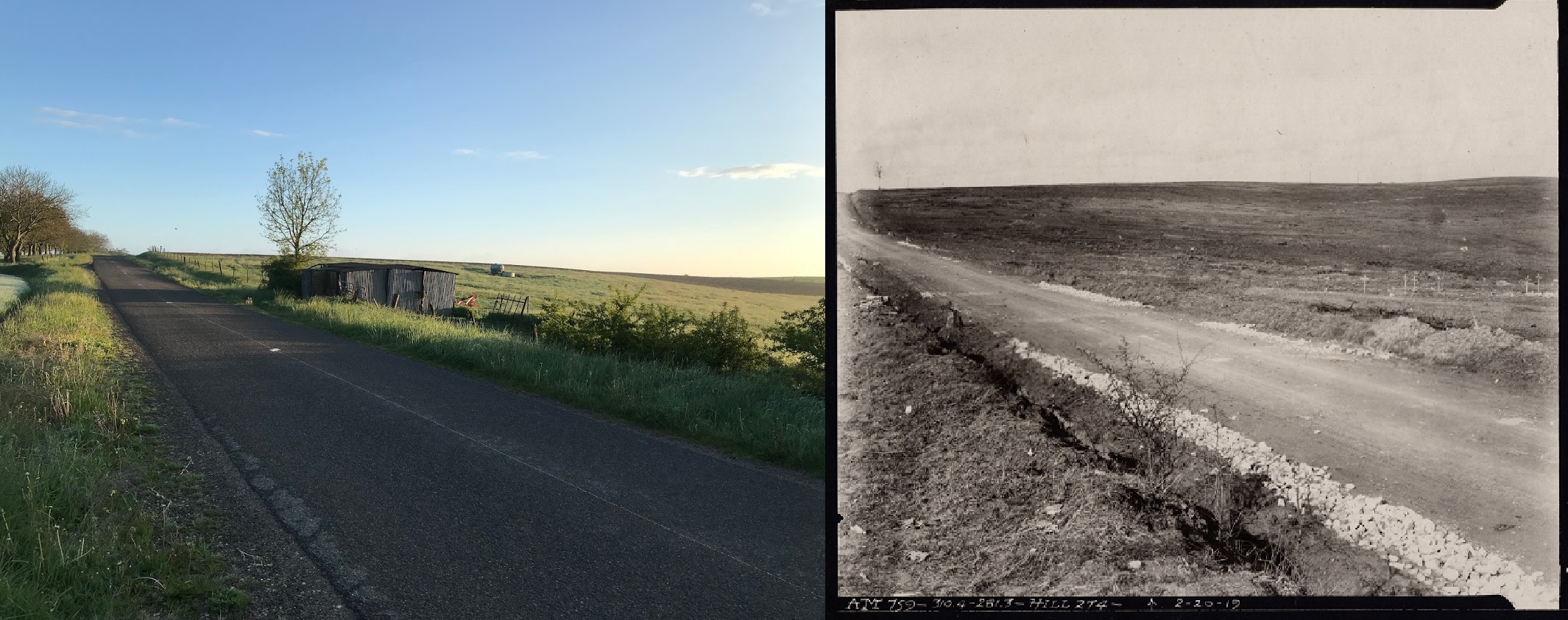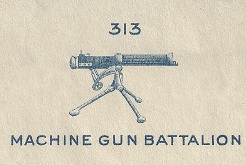"Unsupported, raked by shellfire, and pressed on three sides, the troops in the swale broke and fled. The survivors huddled on the rear slope of Hill 274, pounded by regular, cruelly accurate blasts of shrapnel that cut whole squads to pieces at a time." A quote from Author Edward Lengel in his book To Conquer Hell: The Meuse-Argonne, 1918.
I had the privilege of walking this battlefield north of Nantillois and experience the topography firsthand. I stood in the swale where so many had died. The present beauty of those fields overtook any sense of seeing it as a place of brutality.

I also went there to see the advantage the Germans had from inside the Bois des Ogons. Trenches and shell holes still scar the woods. In one of my photos, you can see the freshly tilled crest of Hill 274 with the Montfaucon American Monument in the distance. I could finally see with my own eyes the temporary protection that Hill 274 provided for the men that had to pull back from advancing into those woods. But as described in the paragraph above, it also became a concentration of death.

The photo above: Northern slope off Hill 274 just before the swale with the Bois des Ogons in the background.

The photo above: Montfaucon American Monument can be seen in the distance. The crest of Hill 274 as seen from inside Bois des Ogons.

The photo above: Trench from inside Bois des Ogons north of Nantillois, Lorraine, France.

The photo below from 1919 was purchased as part of the Griffin Group photos made available on Randal Gaulke's website Meuse-Argonne.com. My photo in 2019 on the left and the 1919 photo on the right. The southern slope of Hill 274 was a temporary American burial site until the bodies were eventually moved by the Graves Registration Service.

